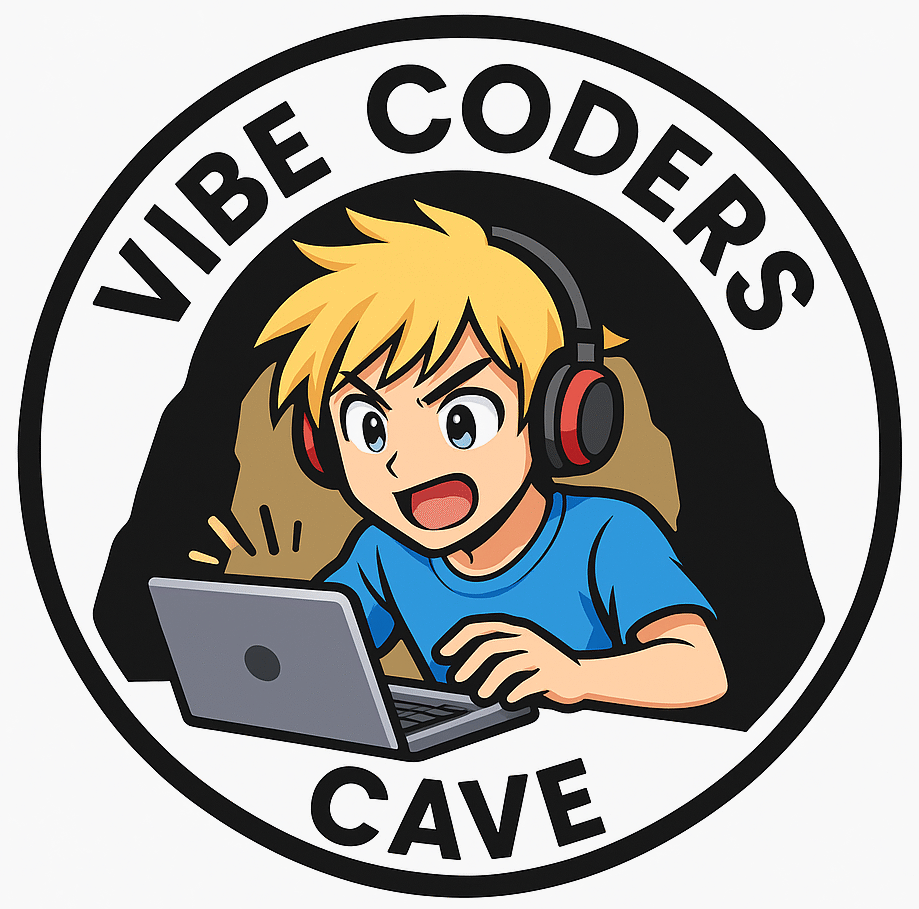AI vibe coding software development has been getting more attention lately as folks look for smarter and more creative ways to write code. Instead of just typing out lines in a text editor, working with AI vibe tools means using machine learning and automation to help shape, debug, and even brainstorm software in a fresh, collaborative environment. For anyone curious about what this means or considering adding some AI-powered flavor to their own workflow, I’m sharing everything I know so you can get a sense of what’s involved and where to start.

The Rise of AI Vibe Coding Tools
Not so long ago, coding mostly meant working solo in an IDE and double-checking documentation every step of the way. Now, AI vibe coding tools are popping up everywhere, creating a new culture around software development. These tools use deep learning language models trained on tons of public code to recommend solutions, spot bugs, and sometimes generate whole chunks of functional code directly from natural language prompts.
This new approach is shaking up the software industry and appealing to coders who want a more interactive and less repetitive workflow. AI-driven software development is growing fast, with research firms pegging the AI developer tool market to be worth billions in the next few years. It’s catching on across teams too, from solo freelancers to large companies looking for ways to boost their project timelines and code quality.
The core idea is to mix human creativity with AI-based assistance, letting people focus more on big ideas and less on hand-coding every little thing. This style isn’t about replacing developers, but about making development smoother, smarter, and a whole lot more collaborative.
How AI Vibe Coding Works: Key Concepts
Getting into AI vibe software means learning a few concepts that come up a lot. Understanding these basics makes picking a workflow or tool a smoother ride.
- AI Pair Programming: This is when an AI assistant sits alongside you while you code, suggesting completions, flagging bugs, or even recommending whole functions. It feels like having a super helpful copilot who’s always ready with ideas.
- Code Generation from Prompts: With this, you describe what you want – a REST API, an animation, or a database query – and the AI spits out the actual code in your favorite language. It’s a real timesaver for boilerplate or tasks you don’t want to repeat over and over.
- Smart Debugging: Some AI tools analyze running code, check for common mistakes, and offer clear, human-like suggestions for how to fix them. You get real feedback in a fraction of the time.
The most popular tools, like GitHub Copilot, Tabnine, or Codeium, tap into cloud-based AI models trained on public code and can slot right into VS Code, JetBrains IDEs, and more.
Getting Started with AI Vibe Coding Software
Adding AI vibe coding to your daily workflow doesn’t mean scrapping everything you know. Most tools slot right in with trending editors and languages. Here’s what usually helps when you’re just getting started:
- Choose a Tool That Fits Your Stack: Most AI coding assistants support mainstream languages like Python, JavaScript, and Java. Check reviews and try a free tier or demo to get the feel for which tool thinks the way you do.
- Get Familiar with Prompts: Since many tools use natural language prompts, practicing how you phrase requests or describe problems can help you get more relevant code suggestions.
- Pair AI with Testing: Always run suggested code through your usual unit tests or linters. The best AIs are helpful, but they don’t always nail context or business logic right away.
- Explore the Settings: Most tools have toggles for how much “help” you want. Some will autocompile suggestions, while others wait for you to accept or reject changes. Tinker around to see what strikes the right balance.
- Review Results and Learn: Each AI has quirks and strengths. Take notes on when the code output is solid and when it needs tweaks, and use these as a learning opportunity.
Bringing in an AI isn’t cheating. It’s smartly using the latest technology to make your day a little easier and your code a little sharper.
Things to Think Through Before Adopting AI Vibe Coding
AI vibe coding tools offer big advantages, but it pays to be aware of a few practical considerations so you can maximize value and tone down headaches. Here are some common issues people run into and how to handle them:
- Code Quality: AI-generated code generally works, but sometimes the solutions are wordy, miss edge cases, or skip out on best practices. Taking time to review, and refactor, what the assistant suggests means higher-quality software in the long run.
- Data Privacy: Many AI coding assistants process code snippets in the cloud. For sensitive projects or proprietary systems, make sure the service you choose follows robust privacy practices and offers enterprise-grade data handling options.
- Integration: Not every tool fits neatly with every stack. Double-check compatibility with your IDE, version control system, and build tools to dodge annoying setup issues.
- Cost: AI tools often start free, but features you need may be behind a paywall, especially for team use or longer code completions. Consider what you’ll actually use before signing up for a paid plan.
Code Quality
While AI is pretty smart, it doesn’t always pick up on the whole context of your project or company style. Sometimes, code suggestions are correct but clunky. The trick is to treat AI as a sparring partner whose ideas need reviewing, not a source of gospel truth. It’s also smart to teach team members when (and how) to accept or adapt generated code.
Data Privacy
If you’re working with unique systems or confidential ideas, check the AI provider’s privacy documents before sharing anything. Some products now offer private cloud deployments, on-prem solutions, or even clientside AI for these scenarios. Checking the fine print upfront saves hassle later.
Integration
Every developer has their favorite stack and setup. Before getting too deep, make sure your chosen tool supports your codebase’s main languages and integrates with your source control, CI/CD pipelines, and ticketing system. Looking at user forums and docs can help avoid nasty surprises.
Cost
Some tools are free for solo devs but charge per seat for teams or add-ons. Pricing models change quickly in this space, so balance the features you need with your budget. Trying the free version first lets you check if something is genuinely helpful in your environment.
Planning for these factors reduces friction and helps teams get the most out of their investment while keeping things secure.
Pro Tips to Take Up a Notch Your AI Vibe Coding
Once you’re comfortable using AI powered tools for code suggestions, there are ways to get even more juice out of them. Here are a few strategies I’ve found to work really well:
Refine Your Prompts: If the AI spits out strange code, tweak your descriptions. Being more specific with framework names, coding style, or business rules helps get better results.
Why This Works: Clear prompts tell the AI exactly what you’re looking for, cutting down confusion and streamlining the workflow.
Integrate with Version Control: Letting your tool access commit messages, diffs, and ongoing PRs makes suggestions more relevant by understanding your team’s context.
Why This Works: AI tools that see the project history give code recommendations that fit your architecture and avoid reworking existing logic.
Mix and Match Tools: Each AI has strengths, so using more than one in parallel (for code, docs, or testing) can cover more ground.
Why This Works: You get a wider pool of ideas and can compare output to pick the most efficient or readable solution.
These tricks boost productivity and also help you learn good habits by seeing how different AIs would handle a problem.
Where AI Vibe Coding Fits: Practical Examples
AI vibe coding isn’t just about speeding up development. It’s changing how teams build and maintain projects. Here are some real-world ways these tools get used:
- Boilerplate Code Generation: Tired of setting up authentication or REST endpoints from scratch? AI tools can spit out standardized code, so you focus on business logic instead of wiring up the basics.
- Speedy Bug Hunts: Instead of slogging through logs or forum threads, AI debuggers highlight likely culprits and point to fixes in the same window.
- Documentation Creation: Code comments and documentation often get pushed to the side. AI assistants fill in docstrings, README files, or even API docs based on the function or class you’re writing.
These features matter for solo coders looking to ship side projects faster, as well as product teams maintaining large codebases who want to avoid burnout on repetitive tasks.
In Team Environments
For teams, AI vibe coding makes it easy to onboard new members by automatically suggesting project conventions and coding standards. It also helps junior developers build confidence with instant support, while experienced coders can focus on tricky problems instead of repetitive tasks.
Real-World Impact
Some companies report cutting feature implementation time in half and significantly reducing bugs in production. AI isn’t perfect, but with a little human touch, the impact is real and measurable.
Frequently Asked Questions
These are questions I hear a lot from devs looking to get started with AI vibe coding:
Question: What programming languages work best with AI vibe tools?
Answer: Most major tools cover Python, JavaScript, TypeScript, Java, and Go. Some support C#, PHP, or even niche languages. Always check a tool’s docs for the latest compatibility info.
Question: Do AI code assistants write “production-ready” code?
Answer: AI helps with the heavy lifting, but you’ll need to review and sometimes rewrite suggestions to match your codebase and business needs. Automated tests are your friend.
Question: Can I trust AI tools with private or proprietary code?
Answer: Pick tools with secure handling and private deployment options. For sensitive work, look for AI that runs fully on your machine or private cloud, with no code sent over the internet.
Getting the Most Out of AI Vibe Coding
Bringing AI vibe coding into your projects is a smart way to give a boost to productivity, learn new techniques, and reduce tedious work. With good planning, clear prompts, and some practice reviewing AI suggestions, developers can speed up feature delivery, cut down bugs, and focus on building creative software. The field is changing quickly, so exploring a few options and finding the workflow that clicks for you is totally worth it. Whether you’re a seasoned pro or brand new to code, there’s something here for everyone who wants a smarter, more dynamic way to build software. Time to roll into the next stage of software development and see just how far you can go with AI vibe coding!
